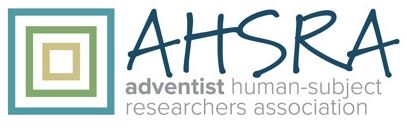Location
Virtual Conference
Start Date
19-5-2021 12:00 AM
End Date
21-5-2021 12:00 AM
Description
The US Census (2019) has identified that the per capita income in Chattanooga is $28,852 and 19% live in poverty. With finances so challenged, paying for healthcare is a huge problem for many Chattanoogans. In 2017, Chattanooga’s poverty rate dropped to the lowest rate for the first time since 2007 (Flessner, 2017). Of the people who are 65 and older, 17.6% live in poverty (Census.gov, 2019). While 51% of females live in poverty (Census.gov, 2019). If they don’t have enough money to eat, they surely don’t spend money on healthcare, much less on preventive screenings. It is important as educators to work together with community partners. Creating partnerships is a very beneficial way to work together and serve the community. There is a gap in the literature on providing free healthcare to the poor and underserved population. There are a few briefs which describe the process of planning or providing the free healthcare (Jackson, 2011; Free Health Fair, 2016; Student Hold Free Health Fair for Brooklyn Families, 2012). However, finding evidence about the participant’s perceptions or satisfaction of attending a free health fair is non-existing. Several studies have collected data at a health fair but did not utilize a standardized survey instrument (Escovey et al., 2017; Hamilton et al., 2017; Murry et al., 2014; Salermo et al., 2018; Ying Yang Chan et al., 2019). In 2000 Chris Ramsey started the Southeast Tennessee Healthcare Consortium (SETH-C) and they started having the Minority Health Fair (MHF) which is a free health fair for Chattanoogans. There is a need for free healthcare and screenings. There are over 2,000 people who attend the MHF annually. This study explored the participants’ perceived benefits of attending a MHF.
An exploratory descriptive mixed method design was used. The sample consisted of 87 adults aged 20 to 85. Google Forms was utilized to collect the data for ease of use for the participants. The survey link was converted to a QR code and made available to the MHF participants. The online survey data populated Google Sheets and was then analyzed using descriptive statistics. The vast majority of the 87 participants self reported that they felt the minority health fair was beneficial.
Collaborations to Serve the Health-challenged in our Community.
Virtual Conference
The US Census (2019) has identified that the per capita income in Chattanooga is $28,852 and 19% live in poverty. With finances so challenged, paying for healthcare is a huge problem for many Chattanoogans. In 2017, Chattanooga’s poverty rate dropped to the lowest rate for the first time since 2007 (Flessner, 2017). Of the people who are 65 and older, 17.6% live in poverty (Census.gov, 2019). While 51% of females live in poverty (Census.gov, 2019). If they don’t have enough money to eat, they surely don’t spend money on healthcare, much less on preventive screenings. It is important as educators to work together with community partners. Creating partnerships is a very beneficial way to work together and serve the community. There is a gap in the literature on providing free healthcare to the poor and underserved population. There are a few briefs which describe the process of planning or providing the free healthcare (Jackson, 2011; Free Health Fair, 2016; Student Hold Free Health Fair for Brooklyn Families, 2012). However, finding evidence about the participant’s perceptions or satisfaction of attending a free health fair is non-existing. Several studies have collected data at a health fair but did not utilize a standardized survey instrument (Escovey et al., 2017; Hamilton et al., 2017; Murry et al., 2014; Salermo et al., 2018; Ying Yang Chan et al., 2019). In 2000 Chris Ramsey started the Southeast Tennessee Healthcare Consortium (SETH-C) and they started having the Minority Health Fair (MHF) which is a free health fair for Chattanoogans. There is a need for free healthcare and screenings. There are over 2,000 people who attend the MHF annually. This study explored the participants’ perceived benefits of attending a MHF.
An exploratory descriptive mixed method design was used. The sample consisted of 87 adults aged 20 to 85. Google Forms was utilized to collect the data for ease of use for the participants. The survey link was converted to a QR code and made available to the MHF participants. The online survey data populated Google Sheets and was then analyzed using descriptive statistics. The vast majority of the 87 participants self reported that they felt the minority health fair was beneficial.



